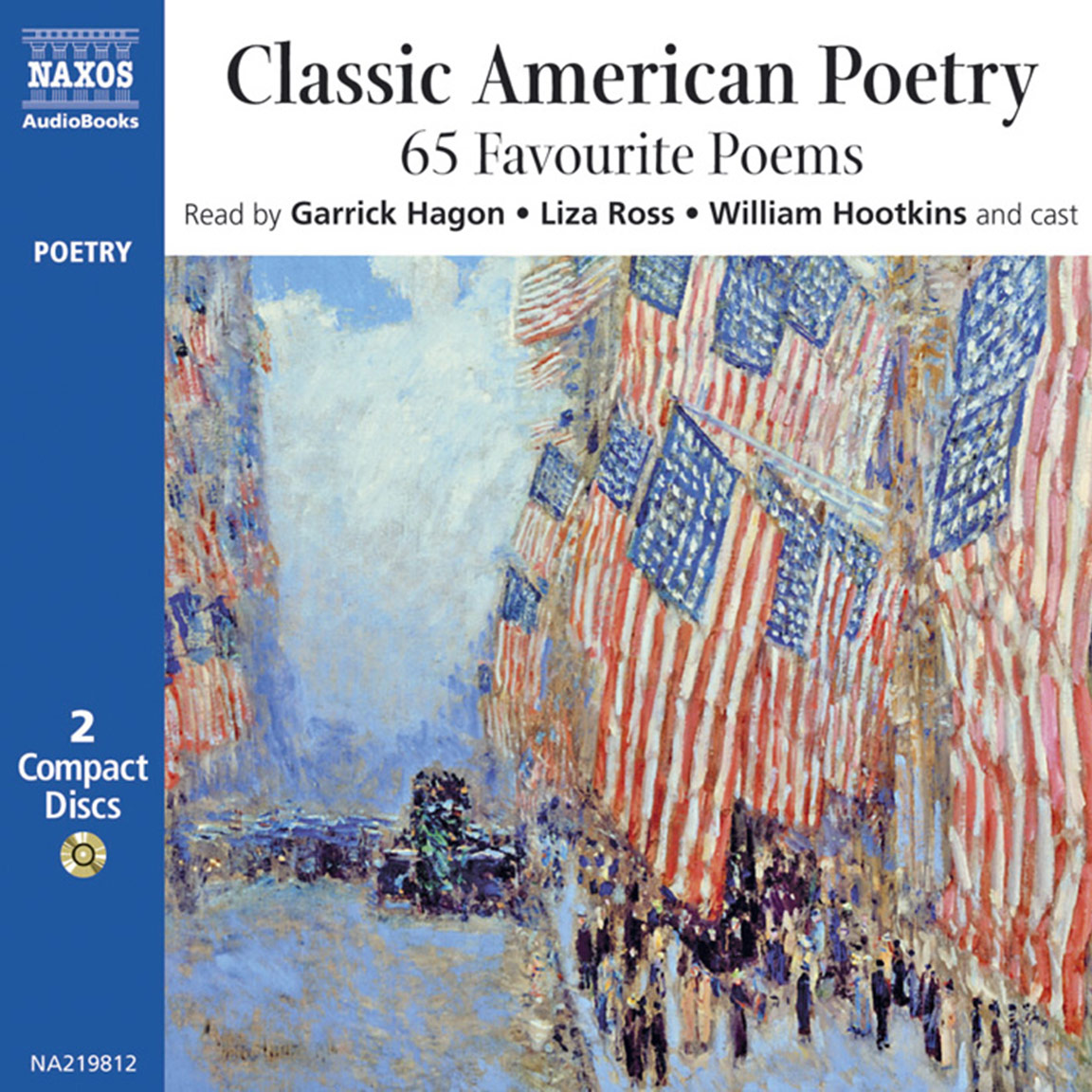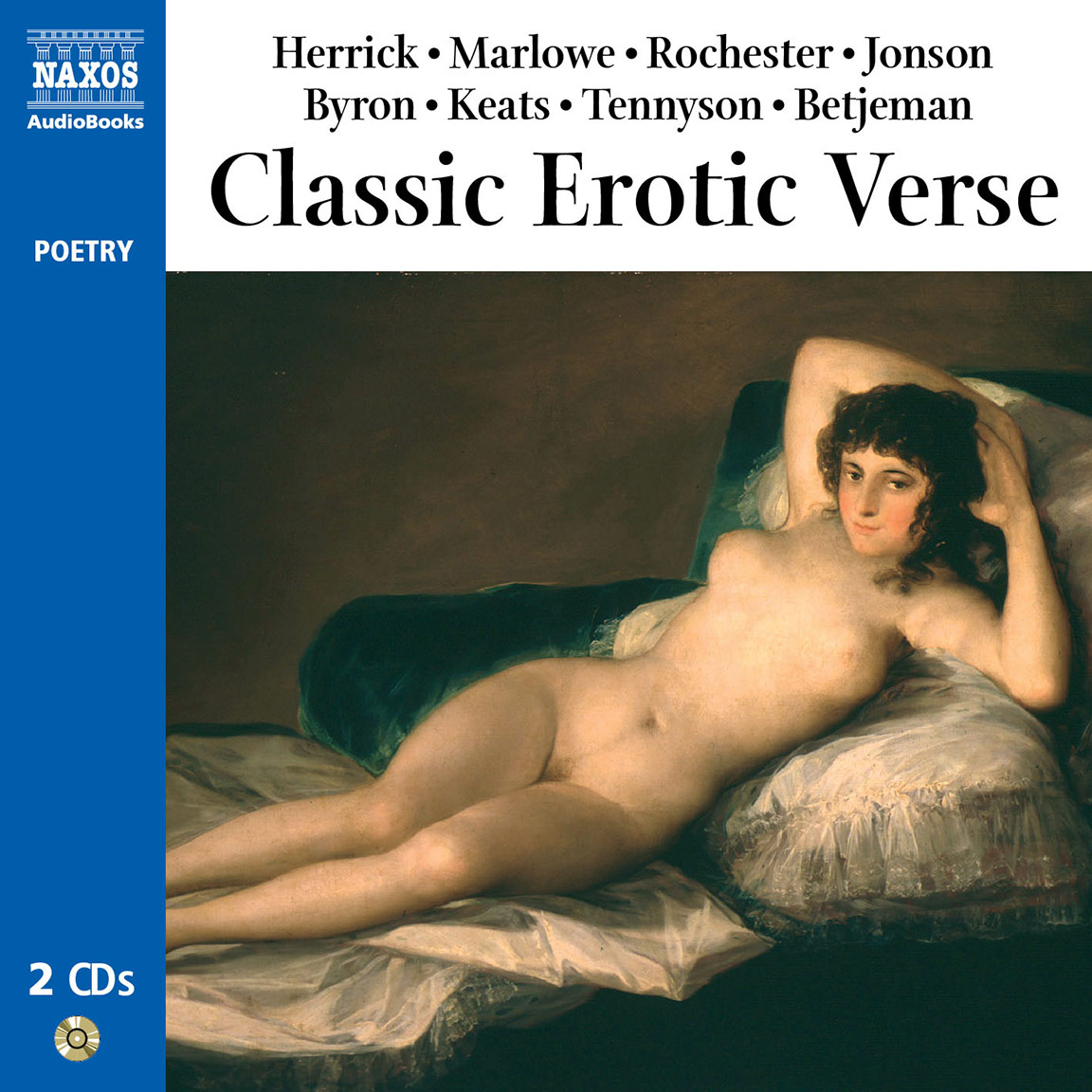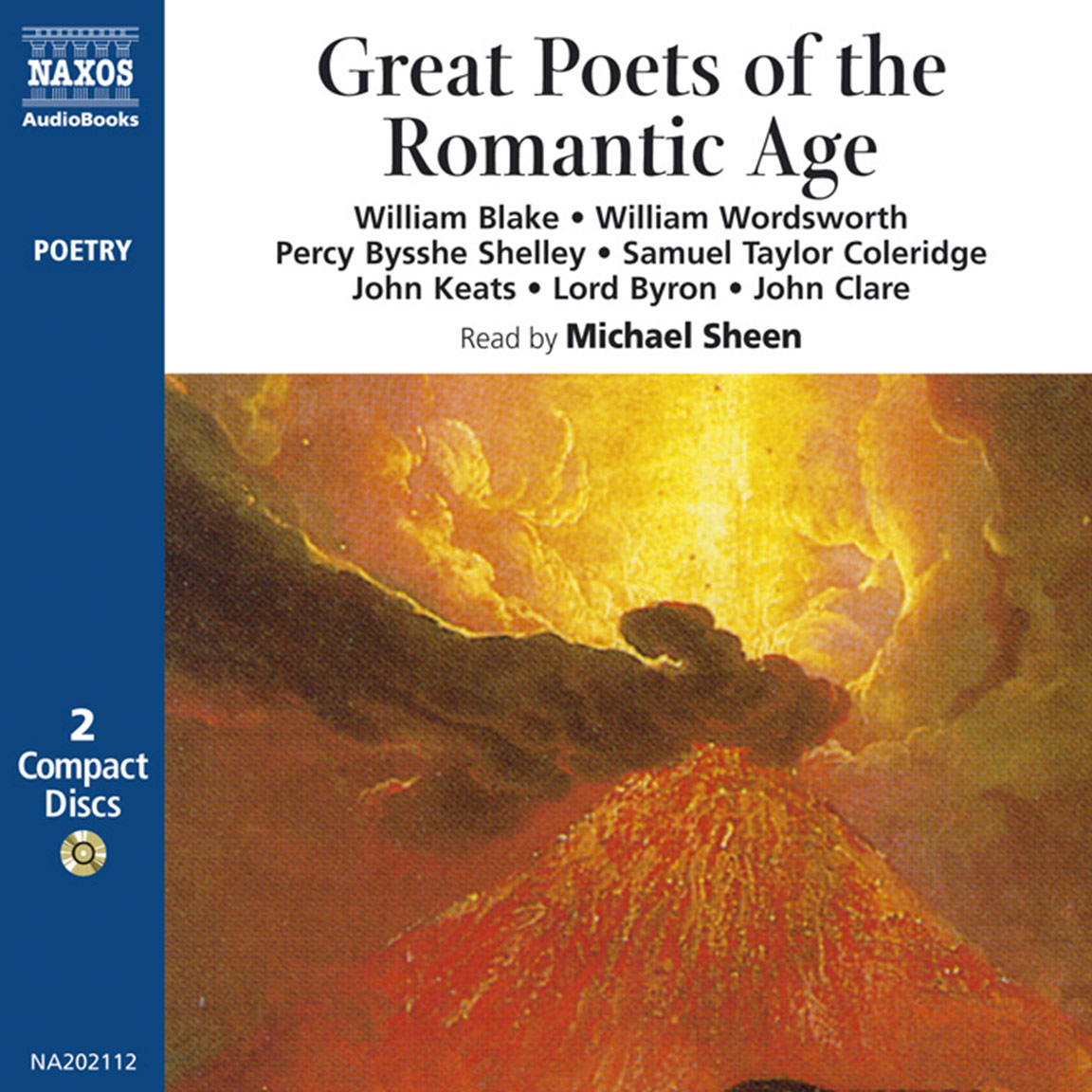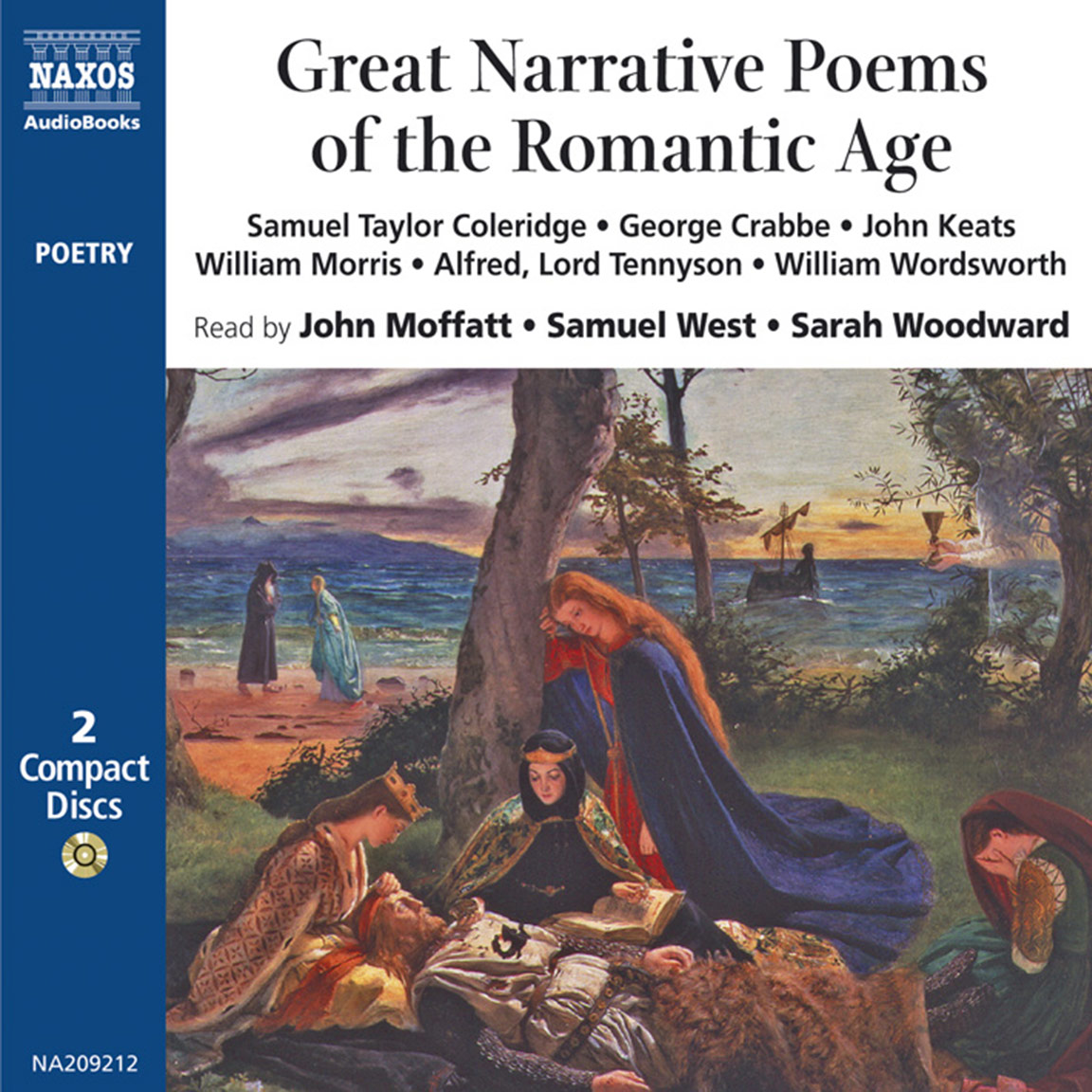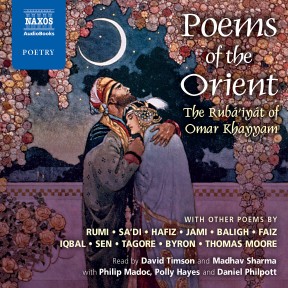
Audio Sample
Khayyam, Jalaloddin Rumi, Sa’di, Hafiz & Rabindranath Tagore
Poems of the Orient
Read by David Timson & Madhav Sharma with Philip Madoc, Polly Hayes & Daniel Philpott
selections
The Rubá’iyát of Omar Khayyam, in the famous translation by Edward FitzGerald, remains one of the most popular poems. It expressed the fascination of Victorian England with the Orient. Here, it forms the main work in the first half, along with other shorter poems by other leading Persian and Indian figures, including Rumi, Sa’di and Rabindranath Tagore. The second half is devoted to works written by Western poets on the theme of the East with The Veiled Prophet of Khorassan, an excerpt from Thomas Moore’s Lalla Rookh – one of the best-sellers of the early nineteenth century.
-
Running Time: 2 h 35 m
More product details
Digital ISBN: 978-1-84379-578-0 Cat. no.: NA215612 Download size: 38 MB Translated by: Edward Fitzgerald BISAC: POE009000 Released: May 2000 -
Listen to this title at Audible.com↗Buy on CD at Downpour.com↗Listen to this title at the Naxos Spoken Word Library↗
Due to copyright, this title is not currently available in your region.
You May Also Enjoy
Included in this title
- The Rubá’iyát of Omar Khayyam
- Verse I – Wake! For the Sun, who scatter’d into flight
- The Rubá’iyát of Omar Khayyam
- Verse XII – A Book of Verses underneath the Bough
- The Rubá’iyát of Omar Khayyam
- Verse XXV – Alike for those who for To-day prepare
- The Rubá’iyát of Omar Khayyam
- Verse L – A Hair perhaps divides the False and True
- The Rubá’iyát of Omar Khayyam
- Verse LXXV – I tell you this – When, started from the Goal
- Ferdowsi (Abu-Ol-Quasem Mansu)
- The Vision
- Ferdowsi (Abu-Ol-Quasem Mansu)
- Jamshid’s Love-making
- Jalal ad-Din ar-Rumi
- Happy the moment
- Jalal ad-Din ar-Rumi
- What is to be done, O Muslims
- Jalal ad-Din ar-Rumi
- I died a mineral and became a plant
- Sa’di – Musharrif Od-din Musligh Od-din
- I questioned once a ball of scented clay
- Sa’di – Musharrif Od-din Musligh Od-din
- The Dervish cloak admits not to heaven
- Sa’di – Musharrif Od-din Musligh Od-din
- Dear to me this lamentation
- Hafiz – Mohammed Shams Od-din Hafiz
- Earthly and Heavenly Love
- Jami – Mowlana Nur Od-din’ Abu Or-Rahman Ebn Ahmad
- The Women of Memphis
- Baligh
- The Hammam Name
- Faiz Ahmed Faiz
- Last night your faded memory filled my heart
- Faiz Ahmed Faiz
- My fellow man, my friend†
- Faiz Ahmed Faiz
- Love, do not ask
- Mohammed Iqbal
- Solitude
- Mohammed Iqbal
- Ghazal No 14 – Beyond the stars more worlds
- Devendranath Sen, translated by Rabindranath Tagore
- My Offence
- Rabindranath Tagore
- Geetanjali 83 – We agreed we will sail together
- Rabindranath Tagore
- Prantik I – The messenger of death came silently
- Lord Byron
- The Destruction of Sennacherib†
- Lord Byron
- Hebrew Melodies: She walks in Beauty†
- Thomas Moore
- The Veiled Prophet of Khorassan from Lalla Rookh
- Thomas Moore
- But there was one among the chosen maids’
- Thomas Moore
- And such was now young Zelica’
- Thomas Moore
- Prepare they soul, young Azim!’
- Thomas Moore
- The song is hush’d, the laughing nymphs are flown’
- Thomas Moore
- Whose are the gilded tents that crowd the way’
- Thomas Moore
- Again, as in Merou, he had her deck’d’
- Thomas Moore
- But morn is up, and a fresh warfare stirs’
Reviews
The word ’Orient’ is a nineteenth-century European term, and a concept that carries the lush overtones of mystery, luxury, and exotica. These extravagant readings of familiar Middle Eastern and Indian poets and Western poets writing about the region hark back to the ’mysterious East’ of yesteryear. The selections are heavy in meter and rhyme, the readings are bombastically melodramatic in a style reminiscent of Vincent Price’s in the ’Thriller’ video, and the musical interludes swell the pulse and the heart. It’s all horribly, almost comically, over the top, yet it works wonderfully well, too, in the way old movies and forgotten pop tunes do. The musical selections are especially good, and give focus and purpose – and balance – to what might otherwise be kitsch.
D.A.W., AudioFile
Booklet Notes
A gleam of all Bokhara’s vaunted gold, of all the gems of Samarkand, this selection offers a taster of the poetry, vast in extent, inspired by, or from the Orient. But where is the Orient? Where does it begin and end? Hunt in vain for a map; at one moment it might be mysterious Cathay, at another enchanted Persia, or a Persia which extends beyond Araby, beyond Abyssinia, even to India.
Its frontiers are the veil of the hareem, the walls of sunlit and jasmine-scented gardens where the nightingale eternally warbles to the rose. The Beloved guards its boundaries, she of ruby lips, of teeth like pearls, and ringlets like hyacinths. Her brows are an archer’s bow, her arrows the glances that speed from it. She watches over hooris who weave their dancing way through innumerable courtyards, adorned with diamonds nourished by the dew of heaven. And always the pomegranates are melting with sweetness.
This empire of the imagination is the Orient inhabited by Lalla Rookh. In her world imposter prophets hide their dazzling countenance or disfigured hideousness behind veils of silver tissue, and ravish grieving hearts with false oaths and falser doctrine. It is a world where true love and salvation return with warriors long thought dead, doom and tragedy ever at their heels.
But it is the fate of all empires to become decadent and fall, even imaginary ones. From its origins in travellers tales of the 13th century to its apogee in the early years of the 19th, when Lalla Rookh was published, conceptions of the Orient remained essentially unchanged. From its first publication in 1817, Lalla Rookh sold in immense numbers, and popularised oriental romanticism. Byron, Shelley, Tennyson, also all draw on the same charming, exotic, escapist myth. After them, greater contact with the East reduced the marvels and legends to explicable social customs. Fable became fact.
It is a world
where true love
and salvation
return with
warriors long
thought dead,
doom & tragedy
ever at their
heels
The quatrains of Omar Khayyam, (1048–1131) translated by Edward FitzGerald stand on the edge of this change. They look to both a future of genuine interest in the poetry of Persia and the East, and to its bogus sweetmeat past. Fitzgerald’s imitation recommended the original; with time, cultivation of the original produced better imitations and greater interest.
Probably the best known Persian poet in the West, Omar Khayyam is not considered the best poet among the Persians. Despite the apparently hedonistic attitude to life expressed in his Rubá’iyát he was one of the most learned mathematicians of his day; certainly the most celebrated astrologer. The astronomical tables he compiled enabled a new calendar to be introduced in AD 1079, the most accurate yet devised.
Ferdowsi (935–1026) is more often regarded as the greatest of the Persian poets. His master work Shahnameh, the Song of Kings, in which the Persian national epic found its final and enduring form, is still read and listened to. Though written about 1,000 years ago, the language of the 60,000 couplets is as intelligible to the average modern Iranian as the King James Bible to a modern English speaker.
Of the Sufi mystics Rumi (1207–1273) is the foremost poet, famous for his lyrics and for his didactic epic Masnavi, a collection of mystical tales and discourse considered second only to Shahnameh. Rumi lived in the Seldjuk capital Konya, and his influence on literature, carried by his Sufism, spead with the expansion of the Ottoman Empire and lasted centuries. Sufism’s central idea is of the soul’s exile from its Maker and its longing to return. This is the cause of love. To the Sufi, God is the Beloved, the Friend. He is also the Lover and we the Beloved; a not dissimilar idea is expressed in the biblical Song of Songs.
In Sufi poetry the nightingale singing to the rose goes beyond being a poem about nature. God is the Silent Rose, the singing Nightingale and the longing Soul. When the poet exclaims he would ‘Sell this world and the next for a cup of pure wine’, the pure wine is faith, rather than a good red. On the other hand, it might just be real wine: it is this ambiguity which makes classical Islamic poetry what it is.
The decisive moment in Rumi’s life occurred when the divine mysteries were revealed to him by a wandering holy man, Shams-ad-Din. Most of his lyrical poems, in Diwan-i-Shams-i-Tabriz, have Shams name inserted instead of Rumi’s own pen name, in an expression of his complete identification with his beloved. After his death, Rumi’s disciples were organised into the sect known by the West as ‘the Whirling Dervishes’.
Bustan (The Orchard) and Gulistan (Rose Garden) by Sa’di (1213–1291) have always been popular in the West. Bustan consists of stories entirely in verse, illustrating the Muslim virtues of justice, liberality, modesty and contentment. Gulistan is a register of aphorisms, advice and anecdotes in a mixture of prose and poems for every taste. The easy acceptability of his moralising, and the elegance of Sa’di’s style, though he learnt Persian at the age of 40 after a life of wandering, has made it the most famous book in the language.
Sa’di is buried close by one of the finest lyric poets in Persian, Hafiz, (1325–1389) in a town called Shiraz. Hafiz’s poetry is most often written in the ghazal, a verse form traditionally dealing with love and wine, motifs of ecstasy and freedom from restraint natural to expressing Sufi mysticism. Hafiz’s capacity for linking the simple or everyday image with the Sufi search for God, in an unaffected musical style, guaranteed his appeal wherever the influence of Persian extended.
Jami (1414–1492) who spent most of his life in the fabled Samarkand, is considered the last great classical Persian writer in the tradition that links all these poets. His most famous collection of poetry is a seven part compendium, Haft Awrang modelled on the work of a 13th century poet, Nezami. The famous poem Yusuf and Zuleika (Potiphar’s wife), from which Women of Memphis is an extract, forms part of the collection. His prose and verse work Baharistan is based on Sa’di’s Rose Garden. Nevertheless his work is very much his own, especially his exposition of Sufi doctrine, for which he was renowned from the Bosporus to East Bengal.
Jami’s death marks the conclusion of a golden age, although Persian poetry enjoyed an Indian summer in the Moghul dominions, a silver age in the second home of the Persian language. Yet the tradition is not yet exhausted. Even in our own century the school of Persian poetry in northern India has been active enough to produce a poet of the stature of Sir Muhammed Iqbal (1873–1938). In his Asrar-i-Khudi (Secrets of the Self) an ethical and moralising poem descended from Sa’di’s Bustan, the great inheritance of Persian imagery and form can be clearly heard. Faiz Ahmed Faiz, one of the foremost Urdu poets, takes, like Iqbal, the heritage of old motifs and gives them a new dimension. This was always the task of the true poet, to fill the patterns and forms of traditional images and symbols, and to make them a part of his own life.
Rabindranath Tagore (1861–1941) is known primarily in the West for his Nobel prize winning translations and versions of mystical verse such as Geetanjali, brought to European attention by W. B. Yeats and Ezra Pound. In India, especially Bengal, he is also noted for his vast output of plays, novels, and volumes of short stories, not to mention his painting and music. Tagore drew on both classical Persian poetry, as well as the Sanskrit influenced literature of Bengal which tends to avoid words of Persian or Arabic origin. In the 1930s he was reborn as a modern poet, freeing himself from the lyrical and the romantic and independently bringing similar qualities to Bengali as T. S. Eliot brought to English poetry.
Notes by Benedict Flynn
